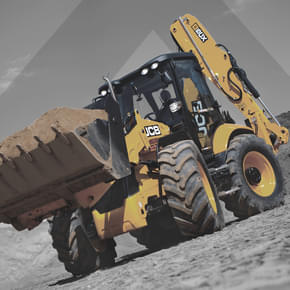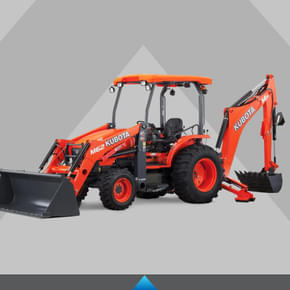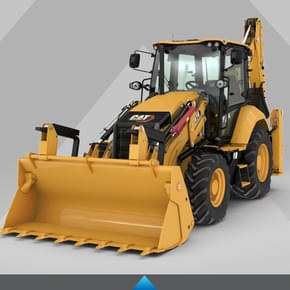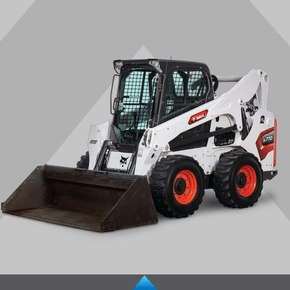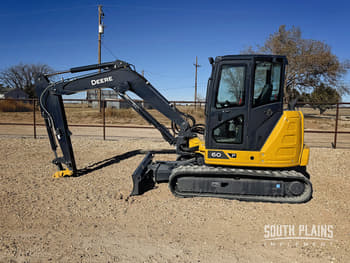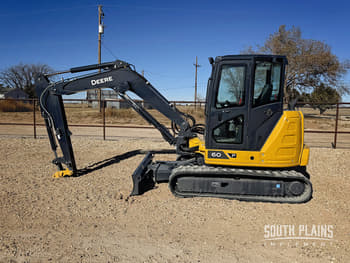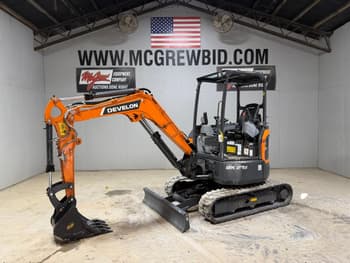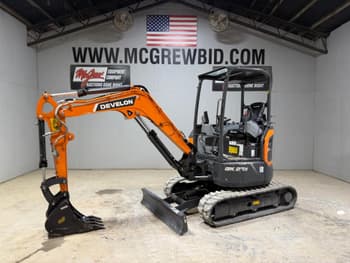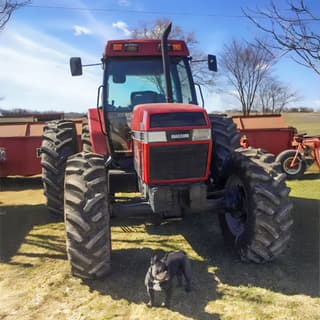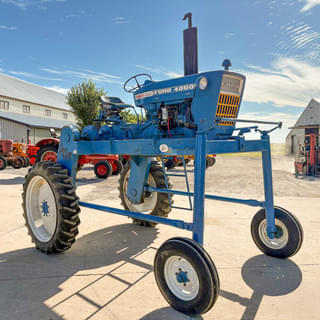When it comes to heavy-duty digging tasks, the equipment you choose can make a significant difference in getting the job done. Whether you’re a contractor, farmer, landscaper, or DIY enthusiast, selecting the right machine for the job is crucial.
Digging, trenching, and earthmoving are fundamental tasks in construction, agriculture, landscaping, and various other industries. These jobs require powerful and versatile machinery to be efficient and effective. Whether you’re digging a foundation for a new building, clearing land, or installing utility lines, the right machine can significantly impact productivity, cost, and the quality of work.
Several types of digging equipment are available, each with their own set of strengths and capabilities. The tractor loader backhoe is a top choice for a digging machine, but how does it stack up against other equipment?
What is a backhoe loader?
First, it’s important to know the capabilities of a tractor backhoe loader, commonly referred to as a backhoe. This equipment combines a tractor, a front loader, and a backhoe. The front loader is used for scooping and lifting materials, while the backhoe is designed for digging. This trio of functionality makes the backhoes work in a wide range of situations.
The backhoe loader was first developed in the 1940s. Joseph Cyril Bamford, founder of JCB, pioneered the concept by attaching a backhoe and loader to a single tractor frame. This innovation transformed the construction and agricultural industries with the creation of a machine that could dig, lift, and move materials without needing multiple specialized vehicles.
What is the difference between a backhoe loader and other types of diggers?
The multifunctional nature of a backhoe loader separates it from other types of digging machines, which are often specialized for certain tasks. There are many key distinctions between a backhoe and other common types of diggers:
Backhoe vs. excavator
An excavator is a heavy-duty machine designed primarily for excavation and demolition. It features a large boom, stick, and bucket, all mounted on a rotating platform. It’s designed for deep digging and is particularly effective in challenging terrains. Excavators are used for trenching, digging foundations, and demolishing structures.
Key distinctions:
- Size and power: Excavators are generally larger and more powerful than backhoes, with superior digging depth and reach. However, they lack the mobility of a backhoe, which can be advantageous in smaller or more confined spaces.
- Versatility: While excavators excel in digging and demolition, backhoes offer the added benefit of a front loader bucket, making them more versatile for loading materials and moving earthman.
- Mobility: Backhoes are more mobile and can easily travel on roads, while excavators typically need to be transported on trailers.
Backhoe vs. mini excavator
Mini excavators are smaller, lighter versions of standard excavators. They are designed for tasks in confined spaces, such as urban construction, landscaping, and utility work.
Key distinctions:
- Size: Mini excavators are compact, making them ideal for jobs in tight spaces where a full-sized excavator or backhoe might be too large.
- Specialization: While mini excavators are highly maneuverable, they are less versatile than backhoes, which can handle a wider variety of tasks.
- Cost: Mini excavators are typically less expensive to purchase and operate, but they lack the digging depth and power of a backhoe.
Backhoe vs. trackhoe
A trackhoe is essentially a tracked excavator. It operates on continuous tracks, providing exceptional stability and traction, especially on uneven or soft ground.
Key distinctions
- Traction and stability: Trackhoes provide better stability and traction on rough ground, making them ideal for more challenging conditions. Backhoes, with their wheels, are more suited to flat or moderately rough terrain.
- Functionality: Trackhoes are more specialized for deep digging and heavy lifting, while backhoes are more versatile and can handle a variety of tasks with the added front loader.
- Versatility: Backhoes, with their wheels, are better suited for jobs requiring frequent movement across or between sites.
Backhoe vs. skid steer loader
A skid steer loader is a compact machine with lift arms that can attach to tools and attachments. It’s commonly used in construction, landscaping, and agriculture for grading, loading, and material handling tasks.
Key distinctions
- Size and maneuverability: Skid steer loaders are smaller and more maneuverable than backhoes, making them perfect for confined spaces.
- Attachment compatibility: Skid steers can be fitted with a range of attachments, but they lack a backhoe’s digging depth and reach.
- Task specialization: While skid steers are excellent for specific tasks, backhoes offer greater versatility for digging, lifting, and loading.
Backhoe vs. wheel loader
A wheel loader is a heavy-duty machine and used primarily for loading materials into trucks, clearing debris, and moving large amounts of earth.
Key distinctions
- Lifting capacity: Wheel loaders have larger buckets and greater lifting capacities compared to backhoes, making them ideal for heavy material handling.
- Digging capability: While wheel loaders excel at loading and transporting materials, they lack the precise digging capabilities of a backhoe.
- Mobility: Backhoes, with their integrated backhoe and loader, can perform a more expansive range of tasks on a single machine, reducing the need for multiple vehicles.
Backhoe vs. bulldozer
A bulldozer has a large blade on the front and can push large quantities of soil, sand, rubble, or other material during construction or demolition.
Key distinctions
- Pushing power: Bulldozers are unmatched in their ability to push and clear large amounts of material, but they are not designed for digging.
- Versatility: Backhoes can dig, load, and transport materials, and bulldozers are primarily used for clearing and leveling.
- Mobility: Backhoes are more versatile in terms of movement and the variety of tasks they can perform. Bulldozers are specialized for heavy pushing and grading tasks
Backhoe vs. tractor
A tractor is commonly used in agriculture for pulling trailers, plows, and other implements. Tractors can be fitted with various attachments, including loaders and backhoes.
Key distinctions
- Primary function: Tractors are primarily designed for towing and agricultural tasks, and backhoes are designed specifically for digging and earthmoving.
- Versatility: While tractors can be equipped with digging attachments, they lack the integrated digging capabilities of a backhoe.
- Task efficiency: Backhoes are more efficient for digging and earthmoving due to their design and integrated backhoe and loader.
What are the advantages and disadvantages of backhoes?
Before deciding if a backhoe is right for your needs, weighing the advantages and disadvantages is essential.
Advantages of backhoes
- Versatility: Backhoes can perform a wide range of tasks, including digging, trenching, lifting, and loading.
- Mobility: With their wheeled design, backhoes can easily travel on roads and navigate job sites, making them ideal for projects requiring frequent movement.
- Cost-effective: A single backhoe can perform the work of multiple machines, reducing the need for additional equipment and lowering overall project costs.
- Ease of use: Backhoes are relatively easy to operate, making them accessible for operators with varying levels of experience.
Disadvantages of backhoes
- Limited specialization: While backhoes are versatile, they may not be as effective for heavy-duty excavation or large-scale material handling.
- Size: Backhoes can be too large for very tight spaces, and a mini excavator or skid steer might be more appropriate.
- Power: For the most demanding tasks, such as deep excavation or heavy lifting, an excavator or bulldozer may be more powerful than a backhoe.
What are backhoe loaders best used for?
Beyond digging, backhoes are ideal for many tasks because they seamlessly switch between a backhoe and a loader. This flexibility makes them valuable in industries ranging from construction and agriculture to landscaping and infrastructure maintenance. Their design reduces the need for multiple machines, saving time, money, and space on any size of job site.
A backhoe serves as a powerful workhorse across many industry and job site uses.
Construction uses. In construction, backhoes are primarily used for digging foundations, trenches for utility lines, and excavation for road construction. Their ability to switch between digging and loading tasks makes them highly efficient on job sites, reducing the need for multiple pieces of equipment.
Large farm uses. On large farms, backhoes are used to dig irrigation ditches, install drainage systems, and perform excavation work for large-scale projects like building barns or installing fencing. Strong power and reach allow them to handle the heavy lifting frequently required in agriculture.
Small and hobby farm uses. For small and hobby farms, backhoes can help with digging post holes for fences, creating small ponds or drainage systems, and trenching for utility lines. Compared to larger machines, their compact size allows them to operate in tighter spaces, making them ideal for smaller environments.
Landscaping uses. Backhoes are used in landscaping to dig out areas for garden beds, remove stumps, and create water features like ponds or ditches. With a backhoe, landscapers can switch between digging, grading, and moving materials, streamlining the landscaping process.
Search TractorZoom.com to find backhoes for sale or other construction equipment for sale to help you complete heavy-duty digging projects.

